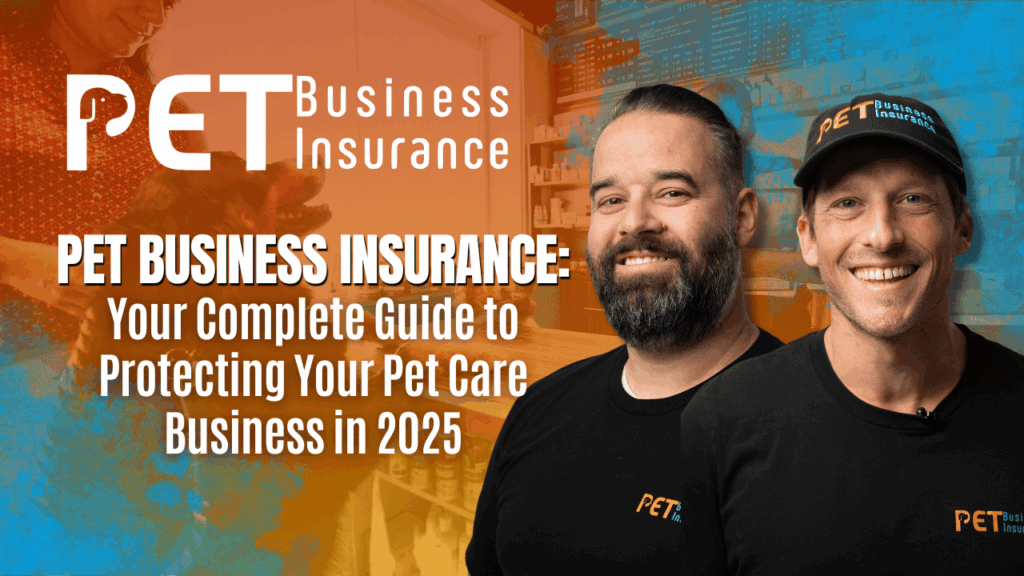
Why You Can’t Afford to Confuse These Two Types of Insurance
The pet care industry is experiencing unprecedented growth, with North American pet industry expenditures reaching $152 billion in 2024 and projected to hit $157 billion in 2025. As more households embrace pet ownership—with 94 million U.S. households now owning at least one pet—the demand for professional pet care services continues to surge. However, with this growth comes increased liability risks that can threaten the financial stability of pet care businesses.
Pet business insurance serves as a critical safety net for professionals who dedicate their careers to caring for beloved companion animals. Unlike standard pet insurance that covers individual pet owners’ veterinary expenses, pet business insurance protects the business owners themselves from the unique risks associated with providing professional pet care services.
In this article, you’ll learn what pet business insurance covers, how it differs from pet insurance, what it costs, and how to tailor coverage to your specific service offering—plus real-world claims that show why it matters.
Understanding Pet Business Insurance: More Than Just Basic Coverage
Pet business insurance includes general liability coverage, typically ranging from $1M to $2M per occurrence. This protects against bodily injury and property damage claims.
What makes it unique is animal bailee coverage, which protects you when a pet in your custody is injured, becomes ill, or goes missing.
Professional liability insurance adds protection against negligence or service-related errors.
Vet bill reimbursement covers client pets’ medical expenses regardless of fault—usually between $2,500–$5,000 per incident.
Essential Coverage Types for Pet Care Professionals
- General Liability – Covers third-party bodily injury/property damage ($15–$25/month).
- Animal Bailee – For pets injured, lost, or killed in your care.
- Professional Liability – Errors and omissions, critical for trainers and consultants.
- Vet Bill Reimbursement – Pays vet bills regardless of who’s at fault.
- Property Insurance – Covers your equipment, facility damage.
- Business Interruption – Replaces income after a covered event halts business.
- Cyber Liability – For data breaches or online booking systems.
- Employee Dishonesty – Covers employee theft and fraud.
Market Growth Reflects Industry Importance
- U.S. pet insurance revenue rose from $1.6B in 2019 to $4.27B in 2023, expected to reach $4.5B in 2024.
- Gen Z pet ownership jumped 43.5% from 2023 to 2024; 70% of Gen Z pet owners have 2+ animals.
- Average dog insurance cost = $56/month.
Average pet business insurance = as low as $14.58/month.
As pet owners become more sophisticated, they expect their service providers to be insured. Proof of coverage is becoming a prerequisite for partnerships and even facility rentals.
Real-World Claims Demonstrate Coverage Value
- A Seattle pet sitter faced a $10,000 claim after a dog was hit by a car.
- A California facility paid $18,179 in damages for client property destruction.
- A New York groomer was responsible for $7,157 after injuring a cat.
- A dog walker incurred a $700 vet bill after a dog ate a toxic plant.
56% of claims reported would not be covered under general business liability. Specialty pet business policies are often the difference between recovery and closure.
Cost Considerations and Coverage Customization
- Pricing: Basic policies start at $14.58/month, with full coverage often under $25.
- Customization Examples:
- Mobile groomers → prioritize bailee + professional liability
- Boarders → need property + business interruption
- Trainers → focus on professional liability
- Mobile groomers → prioritize bailee + professional liability
With dog bite settlements averaging $25K–$50K, one serious claim can cost more than 10 years of insurance premiums.
Industry-Specific Requirements and Regulations
- Pet Sitters / Dog Walkers
Often 1099s, need personal liability + bailee + professional liability. - Groomers (Facility & Mobile)
High injury risk, need bailee, property, professional liability, and sometimes auto-related coverage. - Boarding / Daycare Facilities
Full suite needed: property, employee protection, cyber liability for data and bookings.
Future Trends and Industry Evolution
- Technology (e.g., GPS tracking, online bookings) = cyber liability exposure.
- Gen Z & Millennials: higher spenders, expect professionalism and proof of credentials.
- Regulations tightening: Some cities now require insurance to legally operate certain pet care businesses.
- Associations are making coverage a requirement for certification/membership.
Insurance isn’t just protection—it’s access to clients, business growth, and professional credibility.
Essential Protection for Pet Care Success
You’ve seen how the pet care industry is booming—but that growth comes with serious risk.
Pet business insurance offers cost-effective, specialized coverage tailored to your services. From bailee protection to cyber liability, it fills the gaps traditional policies miss.
Your next step? Evaluate your current coverage. Then explore a plan that protects your business, impresses clients, and sets you up for long-term success in a fast-evolving industry.
Get Your Instant Insurance Quote Now →

